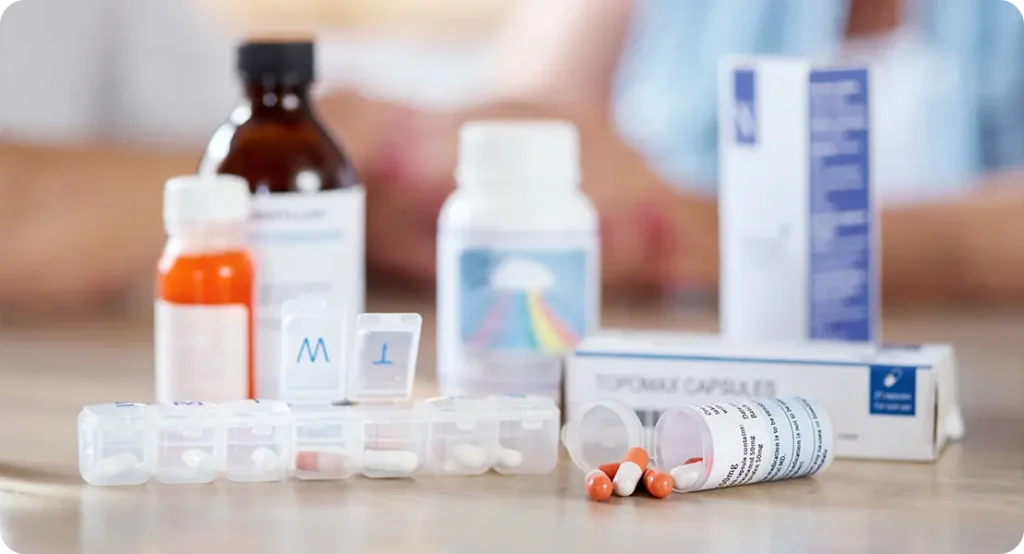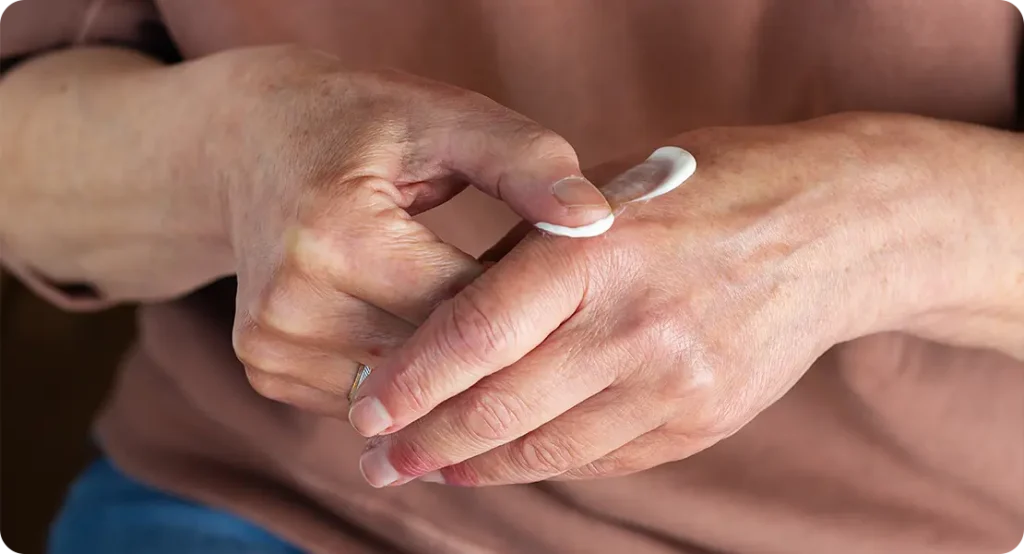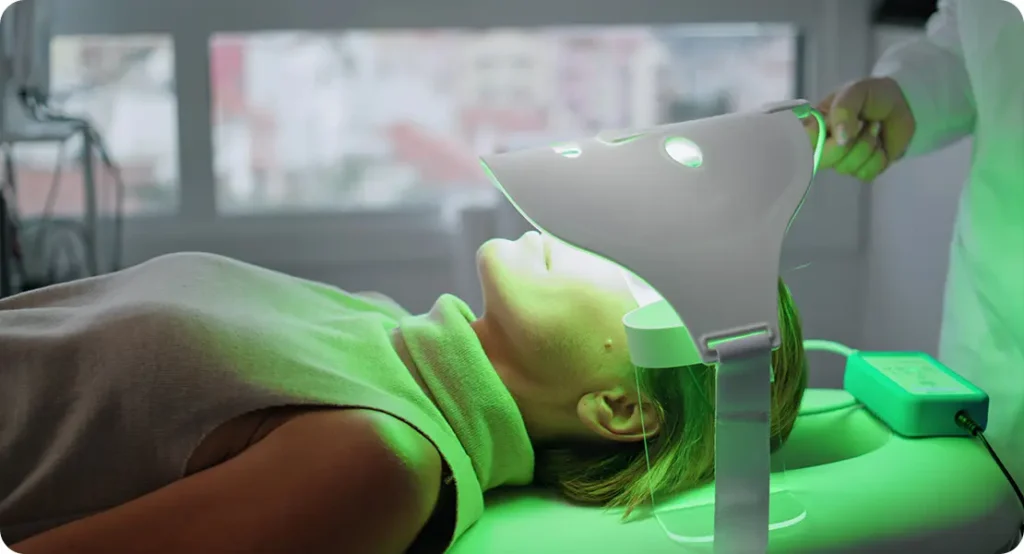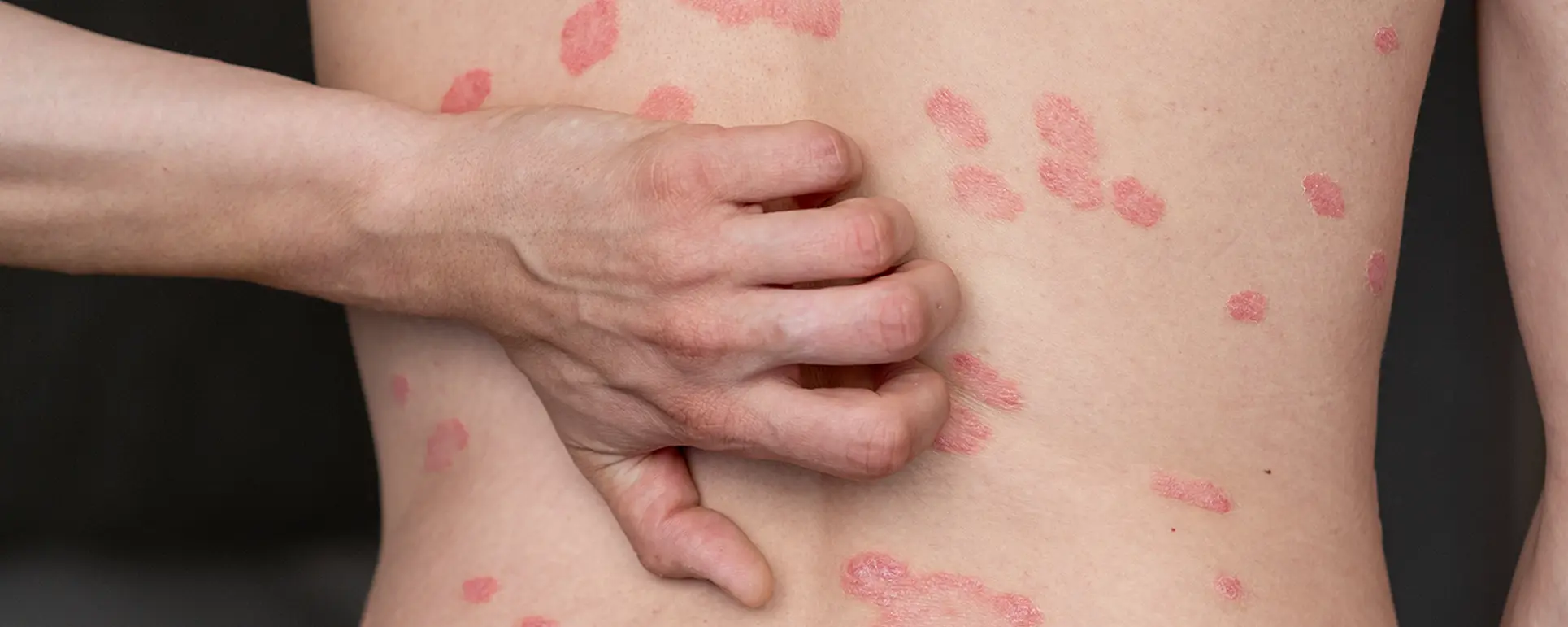If you’re living with psoriasis, you already know that it’s far more than just a skin condition. The persistent redness, scaling, flaking, and itching can be physically uncomfortable and emotionally exhausting. These symptoms often affect more than your appearancethey can impact your sleep, self-esteem, social life, and even your mental health. For many people, managing psoriasis is a daily challenge that requires constant vigilance and, often, a frustrating cycle of trial and error with treatments.
Whether you’ve tried multiple topical creams, light therapies, or systemic medications, it’s not uncommon to feel stuckespecially when side effects become unbearable or treatments lose effectiveness over time. But there’s some exciting news for those who are still searching for better solutions.
In recent years, psoriasis research has made major strides. Scientists now understand far more about the immune pathways involved in the disease, and this has paved the way for a new generation of therapies that are more precise, effective, and better tolerated. From advanced oral medications and long-lasting injectables to innovative topical creams that go beyond basic symptom control, the treatment landscape is evolving fast.
In this article, we’ll explore some of the most promising treatments currently in development and those recently approved. You’ll get a closer look at how these therapies work, what makes them different, and why experts are feeling optimistic about the future of psoriasis care. Whether you’re newly diagnosed or have been living with psoriasis for years, there are real reasons to feel hopeful about what’s coming next.
Why Psoriasis Is So Complex
Before we explore the latest treatment options, it’s helpful to understand why psoriasis is often so difficult to manageand why there’s no one-size-fits-all solution.
At its core, psoriasis is a chronic autoimmune condition. That means the body’s own defence system, which is supposed to protect you from infections and harmful invaders, mistakenly attacks healthy skin cells instead. This triggers a rapid overproduction of skin cells, which causes them to accumulate on the skin’s surface far faster than normal. The result? Thick, scaly, inflamed patches that can itch, crack, and feel incredibly uncomfortable.
But what causes the immune system to go into overdrive in the first place? That’s where things get even more complex. Psoriasis is influenced by a variety of internal and external triggers, and these can differ significantly from person to person. Common factors that can spark or worsen psoriasis include:
- Genetics: If someone in your immediate family has psoriasis, your risk of developing it increases. Certain genes have been linked to the condition, although not everyone with those genes will go on to develop symptoms.
- Infections: Bacterial or viral infectionsespecially strep throatcan trigger flare-ups, particularly in children or those genetically predisposed.
- Stress: Emotional and physical stress are well-known contributors. Stress can disrupt immune function and spark inflammation, setting off or aggravating symptoms.
- Skin injuries: Even minor trauma like cuts, scrapes, sunburns, or insect bites can lead to new patches of psoriasis in a phenomenon known as the Koebner response.
- Medications: Certain prescription drugsincluding beta-blockers, lithium, and some antimalarialshave been linked to psoriasis flares in susceptible individuals.
Because so many different factors are involved, managing psoriasis isn’t just about treating the skinit’s about treating the underlying immune dysfunction. That’s why most effective treatments work on two levels:
- Calming the immune system to reduce inflammation and prevent flare-ups.
- Supporting skin healing by slowing cell growth, relieving symptoms, and restoring the skin barrier.
And to complicate things further, no two people with psoriasis are exactly alike. The severity of symptoms, the triggers, and the way your body responds to treatment can vary enormously. A cream or medication that works wonders for one person may offer little relief to another.
This complexity is one of the reasons why psoriasis research is so vital. It helps pave the way for more personalised, effective treatmentsand gives patients more options to find what works best for them.
What Makes New Treatments Different?
For years, people with moderate to severe psoriasis have relied on older therapies like traditional systemic drugs (such as methotrexate or cyclosporine) and high-potency topical steroids. While these treatments have helped many manage their symptoms, they also come with potential downsides. Long-term use can lead to issues such as liver toxicity, widespread immune suppression, or thinning and damage to the skin.
That’s where newer treatments are beginning to make a real difference. Current research is focused on precision medicinedeveloping therapies that zero in on the specific immune pathways responsible for psoriasis, rather than affecting the immune system as a whole. These targeted approaches aim to interrupt the overactive immune signals without suppressing the body’s entire defence mechanism.
The result? Treatments that may offer better disease control with fewer systemic side effects, allowing patients to manage their psoriasis more effectivelyand with greater confidence in the long-term safety of their care.
Next-Generation Oral Medications

Oral treatments have traditionally included drugs like methotrexate or cyclosporine, which work by broadly dampening the immune system. Today’s research is aiming for more selective options.
TYK2 Inhibitors
One of the most anticipated new classes is the TYK2 inhibitors. TYK2 is an enzyme involved in inflammatory signalling. By blocking it, these drugs can reduce psoriasis activity without fully suppressing the immune system. Deucravacitinib is the first TYK2 inhibitor to show promising results in phase 3 trials.
In studies, it significantly improved skin clearance with a safety profile considered better than some older oral drugs.
Potential benefits:
- Once-daily dosing
- No need for injections
- Lower risk of infections compared to broad immunosuppressants
This could be an important option for people who prefer tablets over biologics.
Targeted Injectable Biologics
Injectable biologics have transformed psoriasis treatment over the past 15 years.
Medications like adalimumab, ustekinumab, and secukinumab target specific cytokinesmolecules that fuel inflammation. The newest generation goes even further in precision.
IL-23 Inhibitors: IL-23 plays a critical role in psoriasis inflammation. New IL-23 inhibitors, including guselkumab and risankizumab, block this molecule more selectively than older biologics.
Why does this matter?
- They’re highly effective in achieving near-complete skin clearance.
- They generally have fewer side effects than TNF inhibitors.
- They require infrequent dosing (every 8–12 weeks).
For many people, this means better results with less disruption to daily life.
IL-17 Inhibitors
Among the newer classes of biologic treatments, IL-17 inhibitors have emerged as a particularly effective option for many people with moderate to severe plaque psoriasis. Medications in this categorysuch as ixekizumab (Taltz) and brodalumab (Siliq)work by blocking interleukin-17, a key inflammatory cytokine involved in the development of psoriatic plaques.
By targeting this specific part of the immune cascade, IL-17 inhibitors help disrupt the cycle of inflammation that causes rapid skin cell turnover and the buildup of thick, scaly patches.
These medications continue to show impressive long-term results in clinical studies, offering both durability and effectiveness. Some of the potential advantages include:
- Rapid improvement: Many patients experience significant symptom relief within just a few weeks of starting treatment.
- Effectiveness in hard-to-treat areas: IL-17 inhibitors have shown particularly strong results on areas that are often resistant to treatment, such as the scalp, nails, and palms.
Ongoing research is focused on optimising dosing schedules and further evaluating long-term safety, especially in real-world settings. So far, the data suggests that these medications can offer sustained control of psoriasis with a relatively favourable safety profile.
New Topical Treatments

Not everyone with psoriasis needs systemic drugs. For mild to moderate cases, topical treatments remain first-line therapy. Research is focusing on smarter creams and ointments that deliver results without the drawbacks of steroids.
PDE4 Inhibitors: PDE4 inhibitors, such as crisaborole (already used in eczema), are being adapted for psoriasis.They reduce inflammation by blocking the enzyme phosphodiesterase 4.
Benefits:
- Steroid-free
- Suitable for sensitive areas
- Lower risk of skin thinning
Clinical trials are underway to confirm their role in plaque psoriasis.
Topical JAK Inhibitors
Janus kinase (JAK) inhibitors represent an exciting and relatively new approach to treating psoriasisespecially in topical form. These medications work by blocking the activity of specific enzymes (JAKs) that play a key role in transmitting inflammatory signals within cells. By interrupting this process, JAK inhibitors can help reduce the immune-driven inflammation that fuels psoriasis symptoms.
What makes topical JAK inhibitors especially promising is their ability to target inflammation directly at the skin level. Because they’re applied as a cream or ointment, they act locallylimiting systemic absorption and reducing the risk of broader side effects often associated with oral or injectable treatments.
Early clinical studies have shown that these topicals may be particularly effective for treating small, localised, and persistent plaquesespecially in patients who haven’t responded well to standard creams. They may also serve as a valuable alternative for individuals who require stronger topical therapy but are looking to avoid long-term use of corticosteroids, which can thin the skin over time.
Several topical JAK inhibitors are currently under investigation or awaiting regulatory approval, and dermatologists are optimistic about their role in filling the gap between mild and systemic treatment options.
Advances in Light Therapy

Phototherapy has been a cornerstone of psoriasis treatment for decadesespecially narrowband UVB therapy, which helps slow skin cell growth and reduce inflammation. While effective, traditional light therapy often requires patients to visit a clinic several times a week, which can be time-consuming and difficult to maintain over the long term.
Fortunately, researchers and device developers are now finding innovative ways to make light therapy safer, more convenient, and more patient-friendly.
Some of the most promising advances include:
- Home-based phototherapy units: Newer at-home devices are designed with built-in timers, safety locks, and exposure controls to minimise the risk of overuse or UV damage. These portable units allow patients to continue treatment without frequent clinic visits, making it a practical solution for those with busy schedules or limited access to dermatology centres.
- Targeted laser therapy: For people with isolated or stubborn plaques, targeted laser devices (such as excimer lasers) can deliver concentrated UVB light to affected areas without exposing surrounding healthy skin. This approach can be particularly helpful for areas like the elbows, knees, or scalp.
- Combination treatments: Light therapy is increasingly being paired with topical medications, such as vitamin D analogues or retinoids. This dual approach may enhance effectiveness while potentially reducing the need for higher UV doses.
Together, these innovations are helping to broaden the appeal and practicality of phototherapy, especially for patients seeking non-drug alternatives or wishing to minimise systemic treatments. As these technologies continue to improve, more people with psoriasis may be able to benefit from light therapy in ways that are safer, more precise, and easier to stick with.
Emerging Areas: Microbiome and Gene Therapy
Looking further ahead, researchers are exploring novel strategies to treat psoriasis at its root.
Microbiome-Based Treatments
The skin and gut microbiomescommunities of bacteria living in and on your bodyare increasingly recognised as important in psoriasis.
Future treatments may include:
- Probiotic supplements to rebalance gut bacteria
- Topical applications of beneficial microbes
- Prebiotics that support healthy microbial diversity
Although these are mostly in early stages, they could offer new, low-risk options down the line.
Gene Therapy and RNA-Based Treatments
While most current psoriasis treatments focus on managing symptoms or calming the immune system, scientists are now exploring the possibility of going deeperright to the genetic level.
Emerging research in gene therapy and RNA-based treatments aims to address the root causes of psoriasis by altering how genes linked to the disease behave. Instead of suppressing inflammation after it starts, these therapies could one day prevent the abnormal immune response from happening in the first place.
One approach under investigation is gene editing, which involves modifying or disabling specific genes that play a role in psoriasis. Another is RNA interference (RNAi)a technique that uses small RNA molecules to block the production of inflammatory proteins at the cellular level. These treatments could be highly precise, affecting only the problematic immune signals while sparing healthy cells.
Right now, both gene therapy and RNAi are still in the early experimental stages and not yet available for clinical use in psoriasis. However, early studies in labs and animal models are showing promise.
While it may take several more years of research and testing, these innovations hold exciting long-term potential. In the future, they could offer people with psoriasis a chance at not just symptom controlbut lasting, disease-modifying treatment.
Lifestyle and Self-Care Still Matter
While cutting-edge medical treatments are transforming psoriasis care, it’s important not to overlook the impact of daily habits and lifestyle choices. Even with the best medications, how you care for your body on a day-to-day basis can make a significant difference in managing symptoms, reducing flare-ups, and improving overall skin health.
Dermatologists consistently emphasise the value of supportive self-care routines, which can complement clinical treatments and help keep psoriasis under control. Key recommendations include:
- Moisturising regularly: Dry skin can worsen itching and make plaques more uncomfortable. Using moisturisers dailyespecially after bathinghelps maintain the skin barrier and reduce irritation.
- Avoiding common triggers: Smoking, heavy alcohol consumption, and high levels of stress are all known to provoke flare-ups in many individuals. Identifying and managing your personal triggers can be a powerful tool in reducing symptom severity.
- Maintaining a healthy weight: Obesity has been linked to more severe psoriasis and reduced treatment response. Even modest weight loss can improve outcomes and reduce inflammation throughout the body.
- Sticking with your treatment plan: It’s tempting to pause medication when your skin starts to clear, but consistency is key. Psoriasis is a chronic condition, and staying on trackeven during calm periodshelps prevent flare-ups from returning.
By combining the latest medical advances with thoughtful, ongoing self-care, you give yourself the best chance of achieving long-term stability and healthier skin. It’s a team effortbetween your treatment plan, your dermatologist, and your daily choices.
What Should You Do Now?
If you’re struggling with psoriasis or thinking about changing treatments, don’t wait to talk to a specialist.
A dermatologist can help you:
- Review the latest options that suit your type and severity of psoriasis
- Discuss the pros and cons of each approach
- Create a plan that fits your lifestyle and goals
The landscape of psoriasis care is evolving fastand you deserve to feel informed and empowered.
Final Thought: Relief Is Within Reach
Living with psoriasis can be frustrating, but it’s an exciting time in research. New therapieswhether oral, injectable, or topicalare offering better results with fewer side effects. and in the coming years, options will only continue to expand.
If you’d like professional advice about which treatments may work best for you, you can get in touch to book a consultation at our psoriasis clinic in London. We’re here to help you find relief and feel confident in your skin again.
References:
- Papp, K. A., Gardet, A., Gooderham, M., et al. (2022) Deucravacitinib versus placebo and apremilast in moderate to severe plaque psoriasis: phase 3 POETYK PSO‑2 trial, Journal of the American Academy of Dermatology, vol. 86(5), pp. 953–961.
https://pubmed.ncbi.nlm.nih.gov/36115523/ - Schafer, P., Romiti, R., Gooderham, M., et al. (2024) Analysis of PASI component scores and body regions in phase 3 POETYK PSO‑1 and PSO‑2 trials with deucravacitinib, Journal of the American Academy of Dermatology, vol. 90(1), pp. 45–54.
https://www.jaad.org/article/S0190-9622(22)01246-4/fulltext - Ghoreschi, K., & Johnson-Huang, L.M. (2025) Deucravacitinib: Adverse events of interest across phase‑3 plaque psoriasis trials, Dermatology and Therapy, vol. 15(3), pp. 567–585. https://link.springer.com/article/10.1007/s13555-025-01337-x
- Imafuku, S., Takeuchi, S., Kato, T., et al. (2023) Efficacy and safety of deucravacitinib in Japanese patients: subgroup from POETYK PSO‑1, Journal of Cutaneous Medicine and Surgery, vol. 27(4), pp. 289–298. https://pmc.ncbi.nlm.nih.gov/articles/PMC11172692/
- Reich, K., Shumack, S., Lebwohl, M., et al. (2021) Phase 3 Trials of Tapinarof Cream for Plaque Psoriasis, The New England Journal of Medicine, 385(25), pp. 2329–2339. DOI: 10.1056/NEJMoa2104491 https://en.wikipedia.org/wiki/Tapinarof
